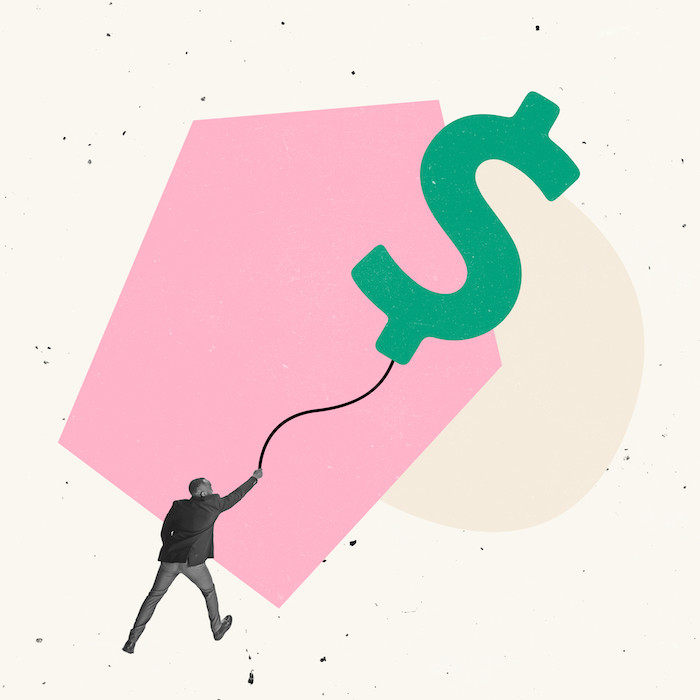
With costs rising, so are cocktail prices. But how do you maintain a sense of value for money? Professor Charles Spence looks at the psychology of price.
Cocktails have long been the more expensive drink. The trade-up, the something special, over and above your everyday – the price, if you like, is priced in by the customer. But as London hotel bar prices straddle the £25 mark for their Martinis – the industry's yardstick cocktail – with some coming perilously close to £30, the conversation around value for money becomes all the more salient.
Particularly when you consider that ingredients alone are rarely the reason for the high price of cocktails in bars. When you can find similarly constituted Martinis at half the price of hotel bars at some of the UK’s independent – and award-winning – bars, it’s not really about the liquid. Value is added in other ways – namely, the experience.
For most bars wanting to charge higher prices (no doubt to off set increased costs) yet maintain a sense of value for money, there are some levers you have to work with. And perhaps the taste, or quality of the ingredients, aren’t as important as you might think.
That is, if one extrapolates the results of studies of blind wine tasting to cocktails. Here, in wine, it turns out that people are typically unable to identify the most expensive wine in a blind taste test. At the same time, however, as soon as the price (or some proxy for price, such as the brand name) is revealed, that expensive drink suddenly does taste “oh so much better” than it did just a moment ago. Very often, in fact, we taste what we expect we are going to taste, and hence if you are going to put an especially pricey item on your drinks menu, it is crucial that you set the right expectations.
Therefore there may be other things you can lever to enhance the perception of value for money in costly cocktails. From the entrance to the goodbye, from the menu and the way in which the drink is served – think only of the theatrical pouring of Connaught Bar’s Martini in this case – to the quality or uniqueness of the glassware.
The ‘gain leader’
While in some bars, the most expensive drink is the most consumed drink, it’s also the case that sometimes very expensive items appear because their presence on the menu helps to make everything else look cheap by comparison. And, of course, if the price is ridiculously high, such as in the above mentioned example, then it can help to attract media interest, which undoubtedly has its own value in terms of free marketing.
One of the other tricks that the wily restaurateur uses is to centre items on the page. That way, it is simply harder for the customer to compare the price of the items. Right-justified menus, by contrast, mean that the customer can simply run their eye down the page to find the cheapest option, should that be what they are after. At the other end of the spectrum, menu designers have various ways of drawing the guest’s eyes toward the more expensive items on the menu, either by highlighting them, or else drawing a box around them on the menu.
In lieu of studies on cocktail bars, it’s worth seeing if the restaurant world can off er insight. Here, there is thought to be a correlation between the length of the description and price. According to the linguist Dan Jurafsky, who analysed thousands of online restaurant menus, for every dollar increase in the price, an average of something like seven extra letters are added to the length of the description of the dish. It is interesting to consider whether the same is true for cocktails – in the case of the two-or-three part Martini, that might be hard, but it feels like many higher-end bars have more verbose menus. One of the other observations to emerge from Jurafsky’s analysis was that expensive restaurants (££££) typically only have half the number of dishes as cheap (£) restaurants. Could that be relatable?
Though in most cases, cocktail bars are working with similarly premium (if not super-premium) spirits, there are those that dabble in the old and rare, which is another route to justifying a high-priced serve. Many hotel bars offer vintage serves and none do it better than Salvatore Calabrese at Donovan Bar, who first proposed the idea of ‘liquid history’ many decades ago. Among Donovan Bar’s vintage list is Salvatore’s Legacy, which includes 1788 Clos de Griffi er Vieux cognac, 1770 Kummel liqueur and Dubb orange curaçao from 1860, costing £5,500. Is it worth it? It depends what price you put on a unique experience.
But without this context, the sense of luxury isn’t present. I recently worked on a project for a boutique spirits brand which was expecting to sell bottles for £6,000. It sent me a small sample, but without the context, the origin story, without the weighty bottle and stopper, which help to prime notions of quality and expense, to me it just tasted like any other spirit.
Finally, for those wishing to list a big-ticket serve it is going to be crucial that the drink, and/or the way in which it is served, not only looks like a million dollars, but is understood to be a million dollars. It was reported recently that a tourist frequenting one of London’s 5-star hotels enjoyed an £18.90 cocktail, only to realise when the bill arrived it was a £1,890 cocktail. Like a lot of good yarns, there are suspicions around this one’s truth, but it at least serves the argument that misread dots and commas, more than taste, make the difference to the perception of value for money.


